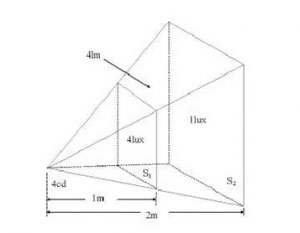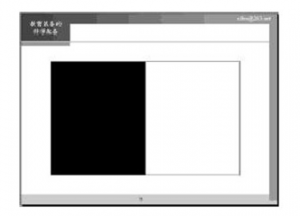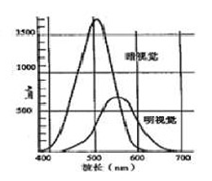With the rapid development of information technology, multimedia classrooms are being widely used in large, middle and primary schools in an unpredictable situation, and the composition of these multimedia classrooms is without exception with a large screen projector as the display core of the entire system device. In order to obtain the best effect of projection, people often come at the expense of reducing the light environment in the classroom, which may become an important factor affecting the vision of teachers and students who have been teaching in the classroom for a long time. In order to have a general understanding of the cause of this phenomenon and the causal relationship to the impact of vision, this article starts from the analysis of the actual luminous flux of the projector, the actual illuminance of the classroom, the trend of the decline of students' vision, etc., and uses data to remind us Educational equipment personnel must attach great importance to this.
1. The actual luminous flux and measurement of the projector
1.1 Measuring principle
The unit (ANSI lumens) used by the projector manufacturer when providing the projector's "brightness" nominal value is actually the unit of luminous flux (ANSI is the American National Standards Institute's English abbreviation), not the brightness unit in the photometric sense . The physical quantity of luminous flux is used to describe the total optical power in a fixed solid angle. In luminosity, the luminous flux is usually expressed by the uppercase Greek letter Φ, and the unit is lumen (abbreviated as lm). Another physical quantity related to this is the light intensity, that is, the luminous intensity, which is generally represented by the capital letter I, and the unit is candlelight or candle (cd); the light intensity is the luminous flux within the unit solid angle. The physical quantity that we usually use most in photometry is illuminance, or simply illuminance, which is usually expressed by the capital Latin E, and the unit is lux (lux or abbreviated as lx); illuminance is the luminous flux that passes through a unit area, so illuminance and luminous flux The conversion between the units is 1lux = 1lm / m2. The brightness in photometry is often called the brightness, which reflects the reflection of light by an object illuminated by light. It is generally represented by the capital Latin letter L, and the unit is nit (nit, 1nit = 1cd / m2); For the projector, the size of this physical quantity depends on the quality of the projection screen and the efficiency of the reflected light. 1 reflects the relationship between these physical quantities, which is the basis for our actual measurement. A luminous body with a luminous intensity of 4cd produces a luminous flux of 4lm in the solid angle as shown in the figure. At a distance of 1m from the luminous body, and just fills a plane S1 with a 1m2 in this solid angle, then The illuminance generated on S1 should be 4lux. The area of ​​the plane S2 that is 2m away from the luminous body and also fills the solid angle should obviously be 4m2, and the illuminance generated on S2 is 1lux. Therefore, when the projection screen is larger and further away from the projector, the lower the illumination on it. And we can calculate the lumens of the luminous flux of the projector based on the illuminance value measured at the projection screen and multiplying it by the area of ​​the projection screen.

Figure 1 The relationship between photometric physical quantities
To measure the actual luminous flux of the projector (that is, the brightness of the projector as stated by the manufacturer) in an ordinary multimedia classroom, the following method can be used, and a light meter is required for the measurement. (1) Turn on the projector and warm it up for more than 5 minutes; (2) Cast it on the projection screen, as shown in the pure black and white image in Figure 2 (you can use Word or PowerPoint); (3) Use the illuminance meter in the image The illuminance value Ew is measured in the white (actually bright) part, and the illuminance value Eb is measured in the black (actually dark) part of the image; (4) According to
Calculate the area S of the projection screen (refer to Table 1) [1]; (5) Use the relationship Φ = (Ew-Eb) * S to calculate the value
Φ, that is, the actual luminous flux that the projector can produce, that is, the actual value of the brightness mentioned by the projector manufacturer.

Figure 2 Images used for testing
The principle of this measurement method is this. First of all, we think that in addition to the projector ’s contribution to the illuminance generated on the projection screen image, there is also a combination of indoor lighting and outdoor sunlight through glass windows, and the light from the indoor lighting and outdoor sunlight acting on the screen is evenly distributed . There is no light from the projector in the black part of the image on the projection screen, because this part of the light is blocked by the relevant part of the optical system in the projector, only the indoor lights and outdoor sunlight. In addition to the effects of indoor lighting and outdoor sunlight, the white part of the image mainly includes the light from the projector that produces the maximum illuminance, so the value of (Ew-Eb) becomes the maximum illuminance produced by the projector on the projection screen. Multiply this illuminance value by the total area of ​​the projection screen to get the actual luminous flux of the projector (that is, the actual brightness of the projector). This is because all the luminous flux produced by the projector acts and only acts on the projection screen.
Table 1 Dimensions and area of ​​various commonly used projection screens
1.2 Actual measurement
Using the above method, we actually measured the luminous flux of a total of 8 multimedia classroom projectors in several schools. The results are listed in Table 2. In order to make the data reliable, three different types of photometric equipment were used in the measurement. Among them were LX-1010B digital illuminance meter made in Shenzhen, TES-1330A digital illuminance meter made in Taiwan and AR813A digital illuminance meter made in Hong Kong. The lighting conditions of the various classrooms are also different. The glass windows of classrooms 1 and 6 are facing the sun, and all indoor lights and shade curtains are opened; the glass windows of classrooms 2 and 3 are facing the shade, indoor lights and shade curtains All of them were also opened; the glass windows of Classroom 5 faced the shade, all indoor lights were turned off but the shade curtains were opened; the lights in Classrooms 7 and 8 were all turned on but the shade curtains were closed; the lights and shade curtains of Classroom 4 All are closed. In addition, classroom 7 uses an electronic whiteboard with a 16: 9 aspect ratio and a size of 100 inches. The projection screens of the other 7 classrooms all have a 4: 3 aspect ratio. It can be seen from the measured results: (1) the actual luminous flux of all projectors has not reached the nominal value of the product; (2) the actual contrast of the image displayed on the screen is closely related to the indoor lighting; (3) the area of ​​about 50 square meters In order to improve the projection display effect, the classroom should use a projection screen of 80 to 100 inches, and there is no need to use a 120-inch projection screen.
1.3 Other factors
There is another actual situation that must be emphasized. When I was making measurements, the teachers and students of the school were taking classes in many multimedia classrooms. In order not to affect the normal teaching, we chose empty classrooms without courses to measure, so the light environment during the test is not all the real classroom environment. When I pass those multimedia classrooms that are in class, I can see the actual lighting in the room through the small glass doors and windows of the corridor. Most of the classrooms close the blackout curtains and turn on some electric lights. The naked eye estimates that the indoor illumination should be less than 100lux. In other classrooms, in order to pursue the projected image effect, all electric lights and curtains are closed, and the indoor illumination is estimated to be below 50 lux. In addition, the situation of the measuring tool must also be clearly explained. There are three types of digital illuminance meters, such as LX-1010B, TES-1330A, and AR813A. The filters are installed in front of the light sensors of these devices.
In fact, the light sensor part of all the illuminance meters on the market is actually equipped with a filter. The results of using the filter and not using the filter are different. There is a question of philosophy here, that is, what is the purpose of measuring light intensity with a light sensor. If the actual objective physical quantity is measured with an illuminance meter, no filter should be added. At this time, the illuminance value reflected by the illuminance meter is the actual illuminance distribution generated by the light source at the test point. However, because the light perception of the human eye is non-linear with respect to the wavelength of light (see Figure 3), the illuminance measured by people is a physical quantity in photometry, and the research purpose of photometry is to deal with the perception of light by the human eye In the light environment, in order to make the illuminance meter consistent with the human eye's light perception, a filter must be added. Therefore, we used a light sensor with a filter in the actual measurement.

Figure 3 The relationship between human light perception and light wavelength
Simple Daddy Bags are becoming more and more popular as regular items for babies and parents. Whether it is a long-distance travel or a short trip, Diaper Bag provides important convenience for babies and parents. The popularity of Diaper Bags has caused new parents to pay more attention to infant travel, not only psychologically but also physical changes, with great significance.
Baby Bags For Dads,Father Diaper Bag,Diaper Dad Bag,Simple Daddy Bag
JOYBABIES PRODUCT CO.,LTD. , https://www.my-joybabies.com